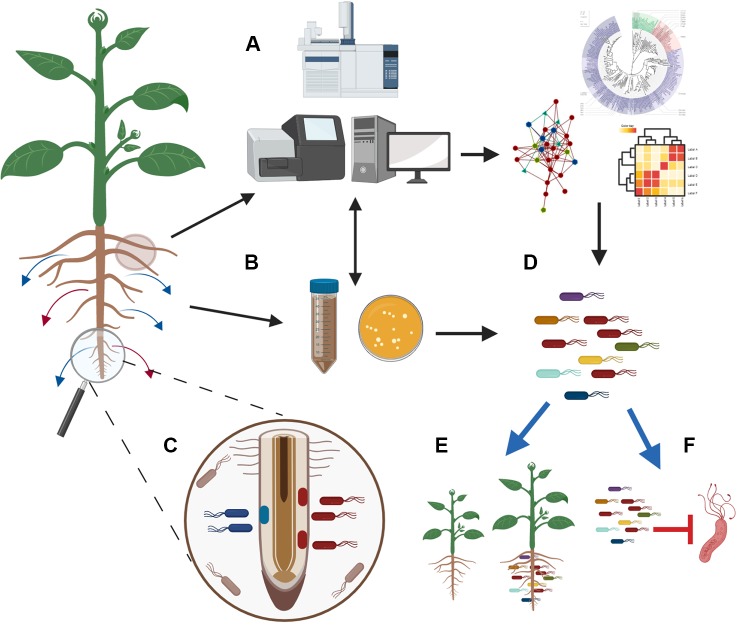Figure 2.
Integration of modern technologies to engineer microbial inoculants that boost plant growth and suppress pathogens. Plants respond to stresses and change their exudation. To unravel how changes in exudation affect microbiome composition and functions, we need to couple advance metabolomic techniques with metagenomics sequencing (A) and culture-based methodologies (B). At the same time, there is promise for the use of exometabolomics methodologies and spatial metabolomics that can help in finding where specific exudates are produced and how the microbes around the exudation site are affected (C). Analysis of the generated data in depth will allow the characterization of the microbial communities that respond to exudates and the identification of networks that will reveal how microbes interact and contribute in the microbiome assembly (A). The parallel isolation of a representative fraction of the root microbiome (B) will allow to link descriptive data with the isolated microbes and will guide the design of synthetic communities (D). Testing of these synthetic communities with different hosts under different conditions (e.g. biotic/abiotic stress/in vitro/in soil/in field) will facilitate the selection of synthetic communities that can promote plant growth (E) and suppress pathogens (F) in a consistent and reproducible manner. The figure was designed with Biorender (https://biorender.com/).

